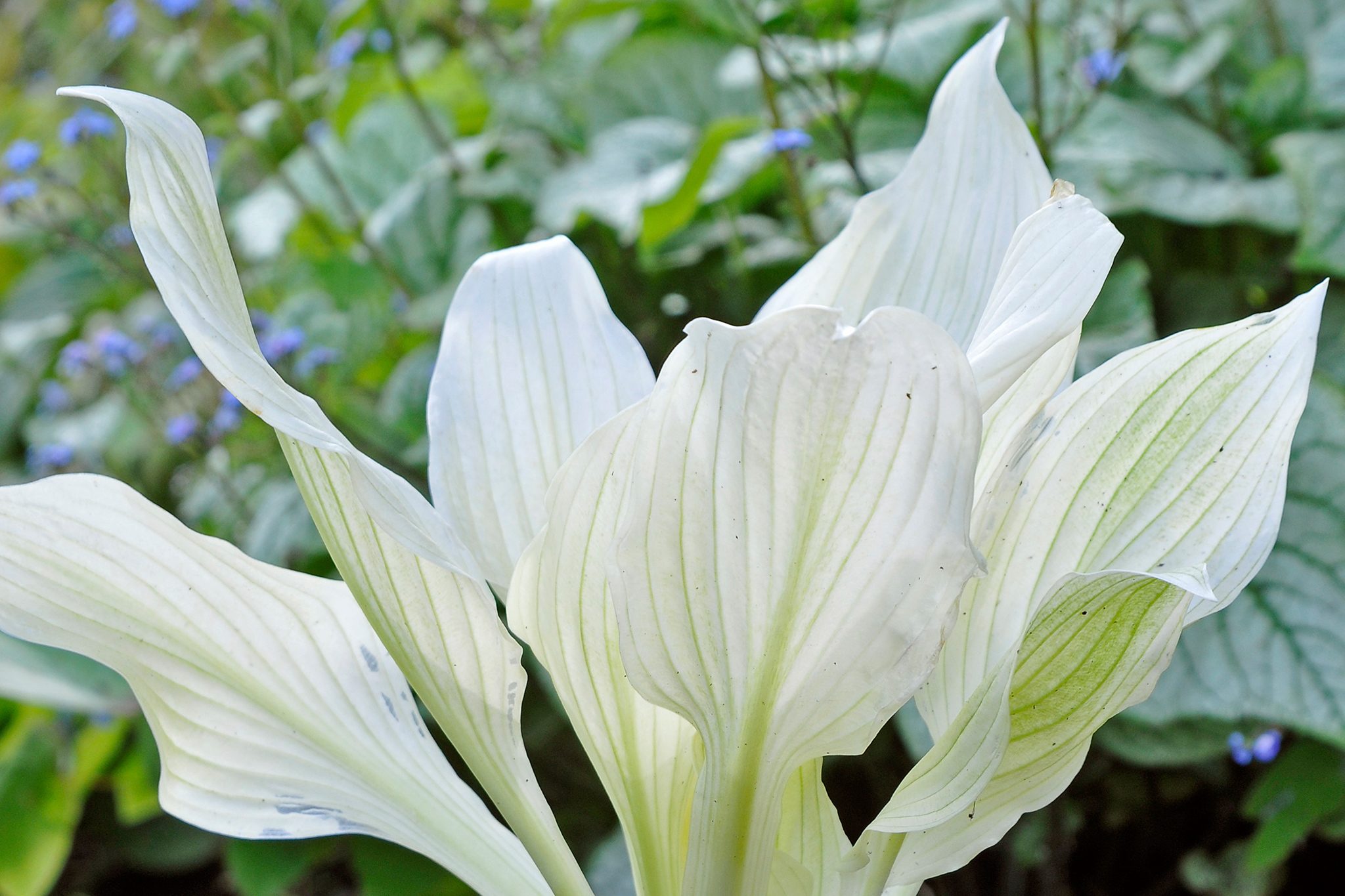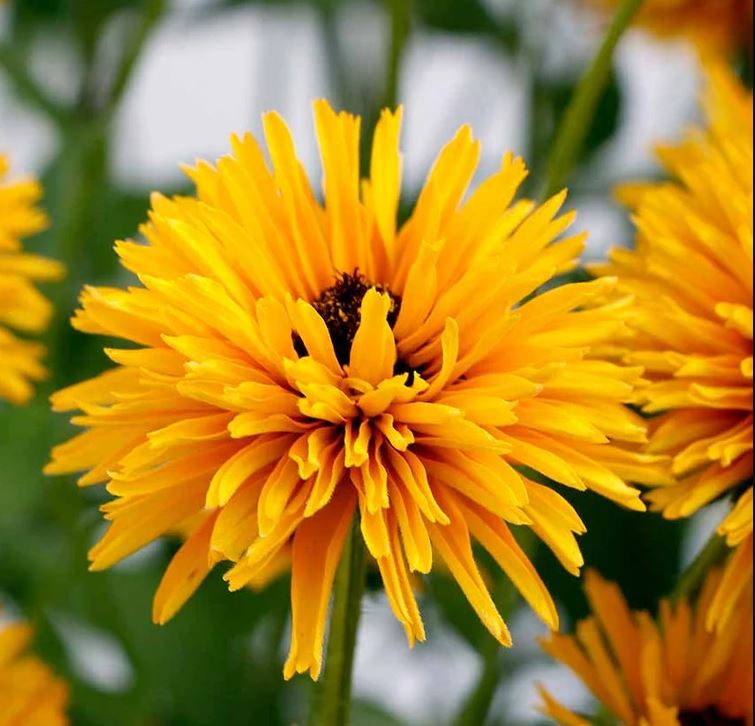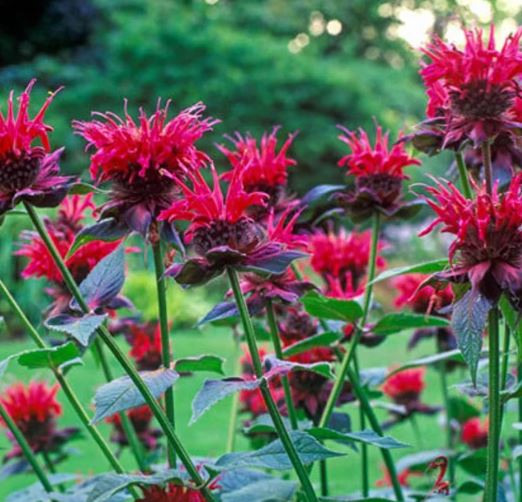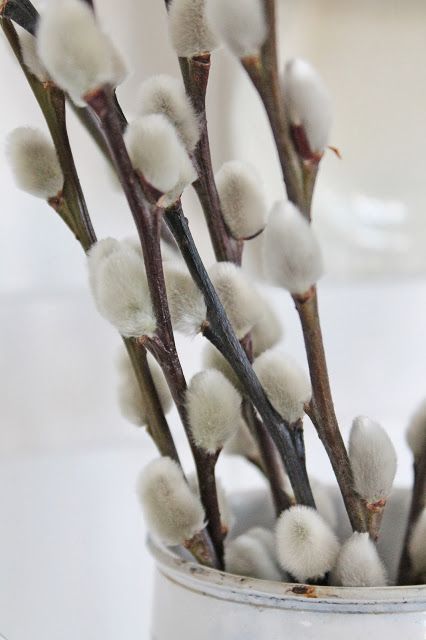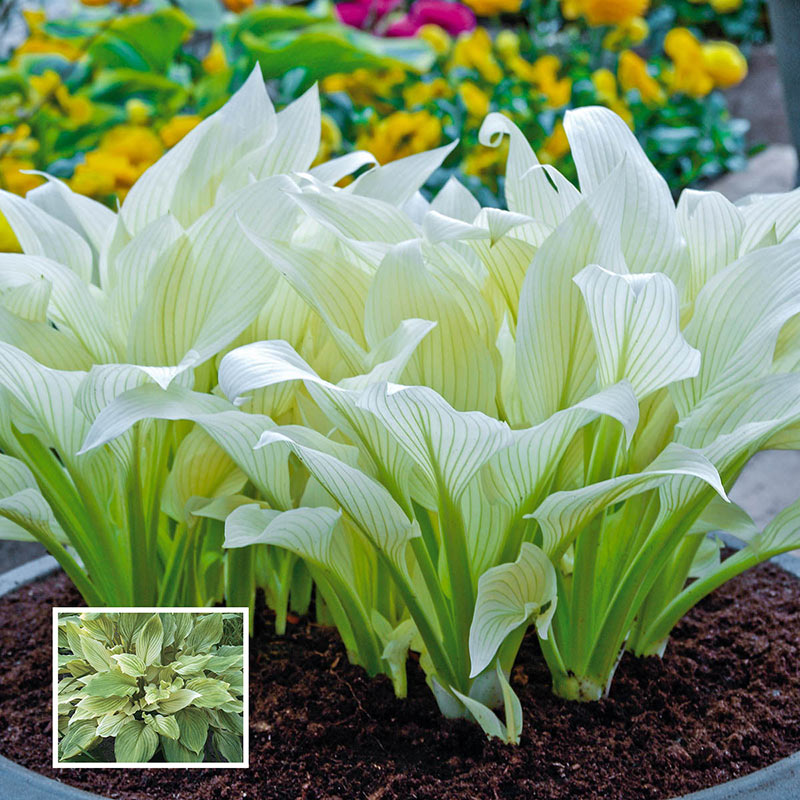
Introduction:
Gardening enthusiasts and horticulturists are constantly in search of unique and captivating plants to enhance the beauty of their gardens. Among the myriad of options available, the White Feather Hosta stands out as an exquisite and enchanting addition. With its striking foliage and graceful presence, this cultivar has become a favorite among gardeners worldwide. In this essay, we will delve into the origins, characteristics, cultivation tips, and aesthetic value of the White Feather Hosta.
Origins and Background:
The Hosta genus, commonly known as plantain lilies, originates from East Asia, particularly China, Japan, and Korea. Hostas are herbaceous perennial plants valued for their attractive foliage and adaptability to various growing conditions. The White Feather Hosta, also known as Hosta plantaginea ‘White Feather,’ is a cultivar within this genus. Its development is a result of careful breeding and selection to enhance specific traits.
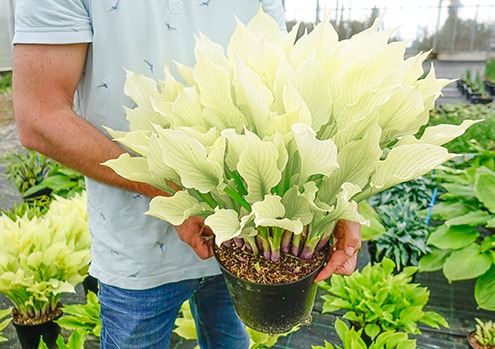
Characteristics:
- Foliage: The most prominent feature of the White Feather Hosta is its stunning foliage. The leaves are broad, ovate, and possess a unique texture and coloration. Unlike the typical green hosta leaves, this cultivar displays a variegated pattern of green and white. The contrasting colors create a dramatic effect, further accentuated by the feather-like edges that lend the plant its name.
- Size and Form: The White Feather Hosta is a medium-sized hosta, growing up to 12 to 16 inches in height and 24 to 36 inches in width. Its mounded form adds a pleasing structure to garden beds and borders. The plant’s shape, combined with the distinct foliage, makes it an ideal choice for both container planting and landscape design.
- Fragrant Flowers: Alongside its captivating foliage, the White Feather Hosta produces fragrant flowers that add an extra dimension to its appeal. The plant bears funnel-shaped, white blossoms with a delightful scent. These flowers typically bloom in late summer, attracting pollinators and adding a touch of elegance to the garden.
Cultivation Tips:
- Light and Shade: Hostas, including the White Feather Hosta, thrive in partially shaded areas. While they can tolerate some direct sunlight, excessive exposure can scorch their leaves. Ideally, the plant should receive morning sun and afternoon shade. Shaded spots beneath trees or along north-facing walls are excellent locations for growing hostas.
- Soil and Moisture: Hostas prefer well-draining soil that retains moisture. Rich, loamy soil with organic matter provides the ideal conditions for their growth. Adequate moisture is crucial, but it is essential to avoid waterlogged soil, as it can lead to root rot. Regular watering, particularly during dry periods, will help maintain the plant’s health.
- Propagation: The White Feather Hosta can be propagated through various methods, including division and tissue culture. Division involves separating the plant’s clumps during the spring or fall and replanting them in desired locations. Tissue culture, on the other hand, involves cultivating the plant in a laboratory setting from small plant tissue samples.
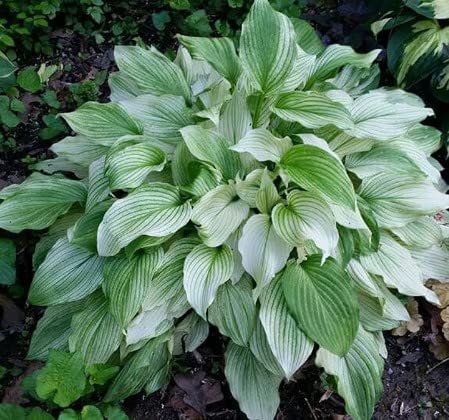
Aesthetic Value:
- Garden Design: The White Feather Hosta serves as an excellent focal point in garden designs due to its unique foliage. Its variegated leaves provide a stunning contrast against other plants with solid green foliage. The mounded form and distinctive coloration create a visually appealing display, whether used as a standalone specimen or in combination with other hosta varieties.
- Versatility: The White Feather Hosta’s adaptability allows it to thrive in various garden settings. It can be effectively used in woodland gardens, shade gardens, or as a border plant. Its moderate size makes it suitable for container gardening, enabling individuals with limited space to enjoy its beauty on patios, balconies, or porches.
- Complementary Plantings: The White Feather Hosta complements a wide range of companion plants. It pairs well with other shade-loving perennials such as ferns, astilbes, and heucheras. The contrasting colors and textures create a harmonious blend, enhancing the overall aesthetics of the garden.
Conclusion:
In the world of horticulture, the White Feather Hosta stands as a captivating and distinctive cultivar. Its variegated foliage, fragrant flowers, and versatile nature make it an excellent addition to any garden or landscape design. With proper care and cultivation, this hosta variety brings an elegant charm that is sure to captivate gardeners and admirers alike. Whether in a woodland garden or a container on a patio, the White Feather Hosta is a testament to the beauty and diversity found in the realm of plants.
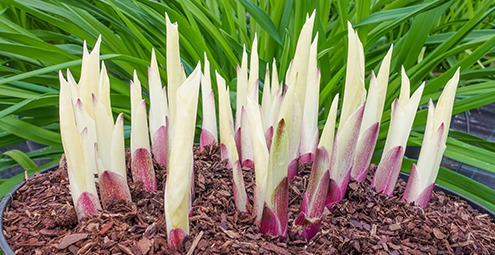
How To Care For White Feather Hosta
Caring for White Feather Hosta is essential to ensure its healthy growth and vibrant appearance. Here are some care tips for this beautiful hosta cultivar:
- Light and Shade Requirements:
- White Feather Hosta thrives in partially shaded areas. It prefers morning sun and afternoon shade to avoid scorching its delicate leaves.
- Locate the plant in a spot that receives filtered sunlight or dappled shade throughout the day.
- Soil and Moisture:
- White Feather Hosta prefers well-draining soil that retains moisture. A rich, loamy soil mixed with organic matter is ideal.
- Ensure the soil remains consistently moist, but not waterlogged, as this can lead to root rot.
- Water the plant deeply and regularly, especially during dry periods. Aim to keep the soil evenly moist.
- Mulching:
- Apply a layer of organic mulch around the base of the White Feather Hosta. Mulch helps conserve moisture, suppresses weed growth, and moderates soil temperature.
- Apply a 2-3 inch layer of mulch, such as shredded bark or compost, leaving space around the plant’s crown to prevent rotting.
- Fertilization:
- Provide regular fertilization to promote healthy growth and foliage coloration.
- Apply a balanced, slow-release granular fertilizer in early spring or use a liquid fertilizer diluted according to the package instructions.
- Avoid over-fertilizing, as excessive nutrients can lead to reduced variegation or floppy growth.
- Watering:
- Water White Feather Hosta deeply and consistently to ensure the root system receives adequate moisture.
- Water at the base of the plant, avoiding wetting the leaves, as wet foliage can increase the risk of diseases.
- Division:
- Every few years, divide the White Feather Hosta to maintain its vigor and control its size.
- Divide the plant in early spring or fall when the weather is mild.
- Carefully dig up the plant clump, separate it into smaller divisions, ensuring each division has roots and healthy foliage.
- Replant the divisions in prepared soil, spacing them appropriately to allow for growth.
- Pest and Disease Control:
- White Feather Hosta is generally resilient to pests and diseases. However, it may occasionally face issues such as slugs, snails, or fungal infections.
- Monitor for pests regularly and take appropriate measures to control them, such as using slug baits or implementing natural pest control methods.
- To prevent fungal diseases, ensure adequate air circulation around the plant and avoid overhead watering.
- Winter Care:
- White Feather Hosta is hardy and can withstand cold temperatures. However, in colder regions, it may benefit from winter protection.
- Apply a layer of mulch around the plant base to insulate the roots and protect them from freezing.
- In areas with heavy snowfall, gently brush off excess snow from the foliage to prevent damage.
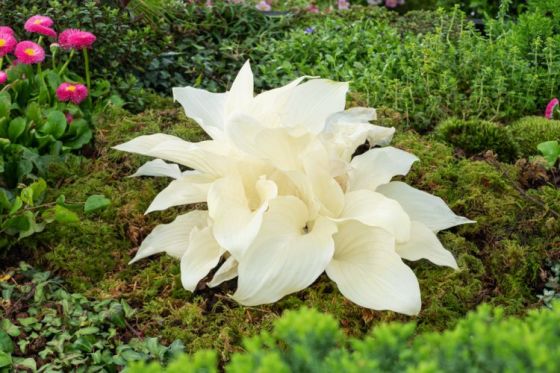
By following these care guidelines, you can ensure the health and beauty of your White Feather Hosta, allowing it to thrive and bring its unique charm to your garden.


